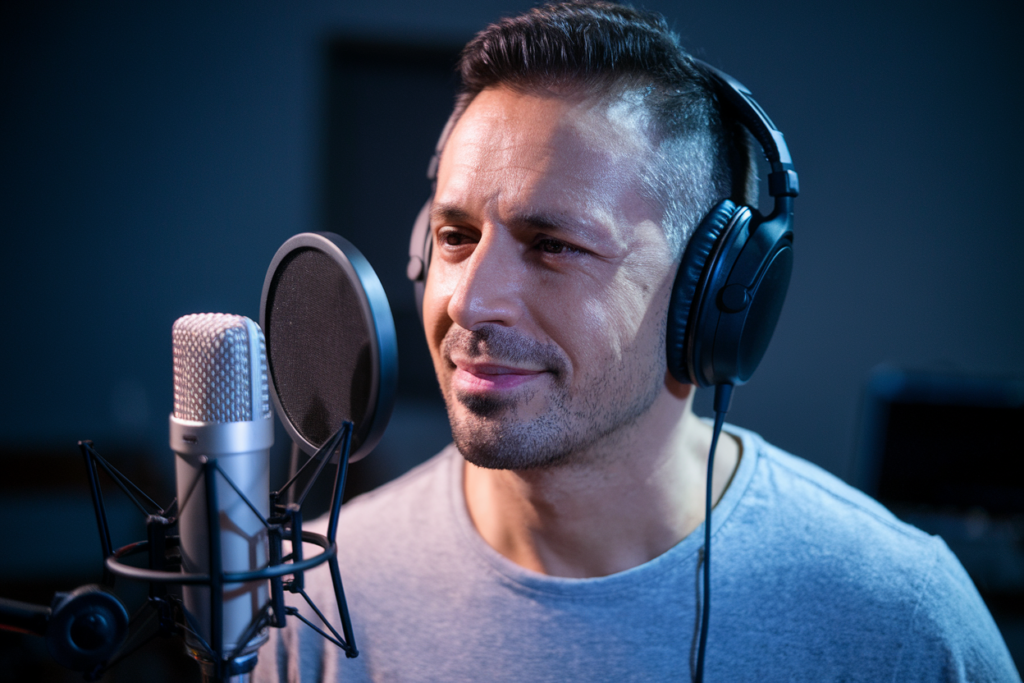Key Takeaways
- Importance of Script Translation: Converting English video scripts into Turkish enhances audience reach, allowing for deeper emotional and cultural connections with viewers.
- Structured Conversion Process: The process involves thorough script analysis, translation techniques (direct translation, adaptation, localization), and collaboration with skilled voice talent to maintain the original message’s integrity.
- Utilization of Tools and Resources: Employing software like CAT tools and subtitling programs can improve efficiency in translations; however, human translators are vital for capturing nuances and ensuring authenticity.
- Challenges in Translation: Awareness of cultural nuances, tone preservation, contextual relevance, voiceover synchronization, terminology consistency, and quality assurance is crucial for effective communication across languages.
- Collaboration is Key: Partnering with experienced professionals who understand both cultures can elevate the quality of translated content while ensuring it resonates well with the target Turkish audience.
Ever wondered how to reach a wider audience by converting English video scripts into Turkish? In today’s globalized world, language barriers can limit your content’s impact. But don’t worry—translating your videos isn’t just about words; it’s about connecting with viewers on a deeper level.
Understanding The Importance Of Script Translation
Translating English video scripts into Turkish plays a vital role in reaching diverse audiences. You open doors to new viewers and potential customers when you overcome language barriers. Think about it: effective communication isn’t just about translating words; it’s about conveying emotions, culture, and context.
Script translation ensures that your content resonates with viewers on a deeper level. It requires not only linguistic skills but also cultural understanding. A skilled voiceover artist can bring the translated script to life, ensuring the tone matches the original intent while engaging the audience effectively.
When considering a project, remember that the right voice talent enhances your message’s delivery. A native Turkish voice actor understands nuances in pronunciation and expression that can significantly impact how your content is received. They can turn a simple script into an engaging narrative that captures attention.
Ultimately, investing in high-quality script translation elevates your brand’s image and strengthens connections with your audience. By prioritizing this process, you position yourself for greater success in global markets where language diversity thrives.
The Process Of Converting English Video Scripts Into Turkish
Converting English video scripts into Turkish involves several key steps that ensure clarity and cultural relevance. Following a structured approach helps maintain the original message while making it resonate with Turkish audiences.
Step 1: Initial Script Analysis
Start by analyzing the script thoroughly. Identify its main themes, tone, and intended audience. Consider cultural nuances that might affect translation. You’ll want to ask yourself: What emotions does this content evoke? How can those feelings translate effectively into Turkish? This analysis sets the stage for a successful conversion, ensuring you capture both meaning and emotion in your final product.
Step 2: Translation Techniques
Utilize various translation techniques tailored to your script’s needs. These methods include direct translation for factual content, adaptation for culturally specific references, and localization to fit regional dialects within Turkey. Emphasizing natural language flow is crucial; you aim for a version that sounds authentic when voiced by a native speaker.
Incorporating these elements allows voice talent to deliver the translated script with accuracy and emotional depth. Whether using professional voice actors or selecting skilled voiceover artists, ensure they understand the context behind your words. Their expertise can bring life to your project in ways that mere words on paper can’t achieve.
By following these steps, you’ll effectively bridge the gap between languages while creating engaging content for diverse audiences.
Tools And Resources For Script Conversion
When converting English video scripts into Turkish, using the right tools and resources is essential for achieving accurate and engaging translations.
Software Options
Numerous software options exist to assist with script translation. Translation management systems streamline the process by organizing your scripts, tracking changes, and facilitating collaboration between translators. Some popular choices include:
- CAT Tools: Computer-assisted translation (CAT) tools help translate text more efficiently by storing previously translated segments and maintaining consistency across projects.
- Machine Translation: Services like Google Translate or DeepL can provide quick translations but may lack accuracy in capturing cultural nuances. Always review machine-generated translations for context.
- Subtitling Software: Programs designed for creating subtitles can help you sync translated text with video content seamlessly.
Using these software options enhances efficiency while ensuring that your Turkish audience receives high-quality content.
Human Translation Services
While software provides valuable support, human translation services remain crucial for nuanced script conversion. Working with experienced translators who understand both languages‘ subtleties guarantees a more authentic result. Look for professionals who specialize in:
- Cultural Adaptation: Skilled translators recognize when certain phrases or concepts require adaptation to resonate better with Turkish viewers.
- Voice Talent Collaboration: A good translator often collaborates with voice talent to ensure the tone aligns with the original message, enhancing viewer engagement.
- Expertise in Your Industry: Choosing a translator familiar with your industry terminology ensures accuracy and effectiveness in communication.
By combining technology’s efficiency with human expertise’s depth, you can create compelling video content that truly connects with your audience.
Challenges In Script Translation
Translating video scripts from English to Turkish presents several challenges that can impact the final product’s effectiveness. Understanding these hurdles is essential for ensuring your message resonates with the target audience.
- Cultural Nuances: Each language carries unique cultural references, idioms, and expressions. Translating a script literally often strips away its intended meaning or emotional weight. Navigating these nuances requires a deep understanding of both cultures to convey the message authentically.
- Tone and Emotion: Maintaining the original tone while translating is crucial. A script meant to be humorous may not translate well into Turkish if the humor doesn’t resonate culturally. Skilled voice talent can help bridge this gap by adapting their delivery to match the desired emotion, enhancing viewer engagement.
- Contextual Relevance: Some phrases or terms in English don’t have direct equivalents in Turkish, leading to misunderstandings if translated directly. Experienced translators consider context and find suitable alternatives that maintain clarity without sacrificing intent.
- Voiceover Synchronization: If you’re adding voiceovers to your videos, timing becomes critical during translation. The length of translated text can differ significantly from its English counterpart; ensuring that it fits within the same time frame while still sounding natural demands careful consideration.
- Terminology Consistency: Industry-specific terminology might vary across languages and regions. Ensuring consistency in technical terms throughout your script is vital for maintaining professionalism and credibility in translations.
- Target Audience Considerations: Knowing your audience influences how you present ideas in different languages. What works for one demographic might not be effective for another; adapting messages accordingly helps connect with viewers on a deeper level.
- Quality Assurance: Relying solely on automated tools poses risks due to potential inaccuracies or misinterpretations in translations. Combining technology with human expertise ensures higher quality results when converting scripts into Turkish.
Navigating these challenges effectively requires collaboration with skilled professionals who understand both languages well—translators adept at capturing nuance paired with talented voice actors capable of delivering engaging performances will elevate your content’s impact significantly.
Conclusion
Translating English video scripts into Turkish isn’t just about words; it’s about creating a meaningful connection with your audience. By understanding cultural nuances and emotional tones, you can ensure that your content resonates authentically. Utilizing skilled translators and native voice talent enhances the impact of your message.
Embracing both technology and human expertise in this process allows you to maintain clarity while engaging diverse viewers. As you navigate these translation challenges, remember that the right approach can elevate your brand image and strengthen relationships in global markets. With careful consideration and skilled execution, you’ll successfully bridge language gaps, making your content accessible and compelling for Turkish audiences.
Frequently Asked Questions
Why is translating English video scripts into Turkish important?
Translating video scripts into Turkish expands your audience reach in a globalized market. It removes language barriers, allowing content to connect emotionally and culturally with Turkish viewers, ultimately enhancing engagement.
What are the key steps in translating video scripts?
The translation process involves initial script analysis to understand themes and cultural nuances, followed by employing techniques like direct translation and localization. These steps ensure the final product resonates authentically with the target audience.
How do skilled voiceover artists contribute to translations?
Skilled voiceover artists bring translated scripts to life by ensuring that the tone matches the original intent. Their expertise helps convey emotions effectively, making the content more relatable for Turkish audiences.
What tools are essential for accurate translations?
Essential tools include translation management systems, computer-assisted translation (CAT) tools, machine translation services, and subtitling software. These resources improve efficiency but should be complemented by human expertise for nuanced translations.
What challenges arise when translating scripts from English to Turkish?
Challenges include understanding cultural nuances and maintaining original tone and emotion. Literal translations can misinterpret meanings or fail to resonate emotionally. Contextual relevance is also crucial due to language differences.
Why shouldn’t I rely solely on automated translation tools?
Automated tools often lack nuance and context awareness necessary for effective communication. Collaborating with experienced translators ensures high-quality adaptations that truly connect with diverse audiences while avoiding misunderstandings.







